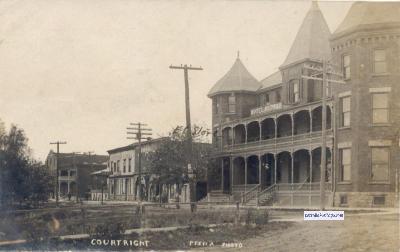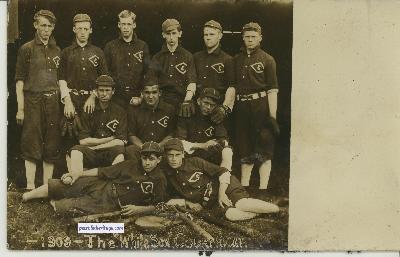
Courtright Ontario
In 1823, Lord Hicks surveyed the town site of Corunna, naming it after the Battle of Corunna in Spain. He chose to name the site after the town A Coruña in Spain because he had spent considerable time there during the Napoleonic Wars. The town's name also owes itself to one of Beresford's commanders, Sir John Moore, who died at the hands of French forces in the Battle of Corunna. Beresford had been sent on a mission to find a suitable capital for a future union between the colonies of Upper Canada (Ontario) and Lower Canada (Quebec). Corunna was not chosen, as it was seen as being too close to the Canada–US border—in the 1820s–1830s, the prospect of an Irish Fenian raid from the United States was considered a serious threat to the British colonies. Today, a small stone cairn stands along Baird Street, near the CSX north-south train track that divides the town. The cairn marks the spot where survey crews planned to build St. George's Square, the area that was to house the Parliament Buildings.[2]
Today, most of Corunna's streets in the downtown bear the name of British military officials that served with Lord Beresford. The streets (Beckwith, Beresford, Baird, Fane, Paget, Lyndoch, Cameron, Bentinck, Colborne, Hill, Murray, etc.) follow some of the original specifications that Beresford's survey crew set out as part of its plans to create a capital.
The Corunna area was originally settled by French farmers, who rented land near the river from the Chippewa First Nation. As the French presence faded, Corunna was settled by a wave of British settlers. One early settler was James Cruickshank, who settled south of Corunna on the Eighth Line near Kimball Side Road, in 1834. A plaque to commemorate his early contribution to the township can be seen in the village of Corunna in a park on Beresford Street, on land which was donated by the descendants of James. The town saw an influx of grist mills, saw mills and taverns. There were attempts to build a canal through Corunna early in its history, but the canal was abandoned soon after it was dug, since it could not maintain consistent water levels. The early history of the town is spotty, but some accounts suggest a brewery was briefly in business in the town. In the 1920s and 30s, there were some village stores. A popular general store was on the west side of Lyndock, north of Hill, where an Esso station later stood and now is a dentist office. Billy Locke, brother of Jack, ran Billy's Bunnery. Billy Garoch had another general store on the Lyndoch and Hill corner where the liquor store is now. It later became MacRae's store and closed in the early 1960s. Billy Garoch also had an ice house to the east of his store, in the old school that had been moved from Lyndoch near the present Roses Variety Store.
Many of Corunna's historic relics have been torn down over the years, but a few structures remain, providing clues to the area's history. The town's Catholic church, St. Joseph's, was built in 1862 and still stands. Its wooden structure is bolstered by enormous trunks of the area's original trees, which were simply squared off and put in place to build the church. Several 1800s vintage homes remain in the town as well. Ambers statue is still standing located near the water on St.Clair parkway.
Baby's Point is the extreme southern point of Lambton County. Kayla Baby owned all the land from this point, and all of Port Lambton site. Inherited from his grandfather in 1742. There also was a brother, James Baby. Edward Kelly was the first postmaster at Baby's Point 1848.
After 1812, people started to settle along the St. Clair River. They were French, and didn't have legal title to the land. When the Irish moved in, the French sold their squatters rights to the Irish about 1833. Indigenous people could sell land only with the approval of the Province. Anyhow, soon after 1812, people bought up land legally along the St. Clair River. In the spring of 1820, Duncan McDonald built the first frame house. A post office opened in 1871, one time known as Lambton Village. Rural mail was first delivered in 1908, and all mail routes completed in January 1909.
The first Sacred Heart Church was built at Baby's Butt Point around 1825. It burned. Fr. Monocq was drowned January 12, 1861, and the body was found in 1862. He was buried beneath the altar of the first Port Lambton Church. The plaque was on the right hand of the side altar. The Sacred Heart Church, Port Lambton, was built in 1877. Martin Regan was the first person baptised there, December 1877. It was demolished, and the new church built on the same site in 1964.
 Courtright Hotel, sadly it is gone now. |
 editor's collection Courtright 'White Sox' Sorry no names yet. Send the names if you have them please. |
|
|
|
||
| |
||
|
|
||
All of these pics and more are from my own collection because people like you let me copy them. I want more.